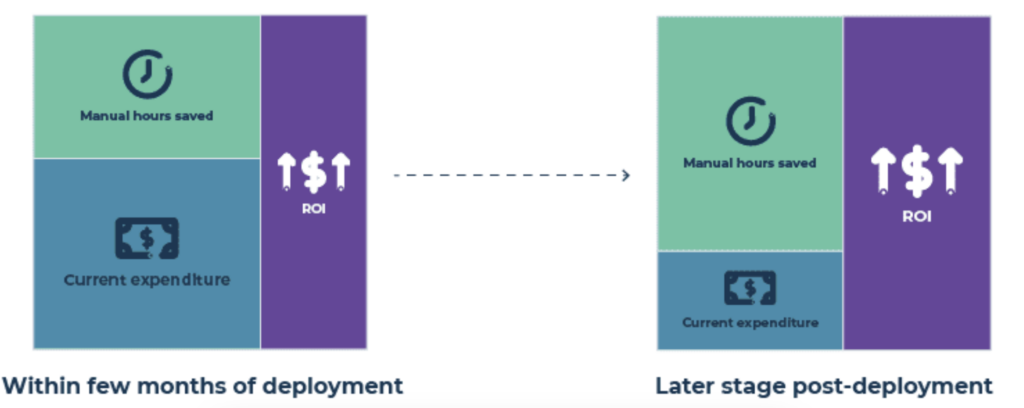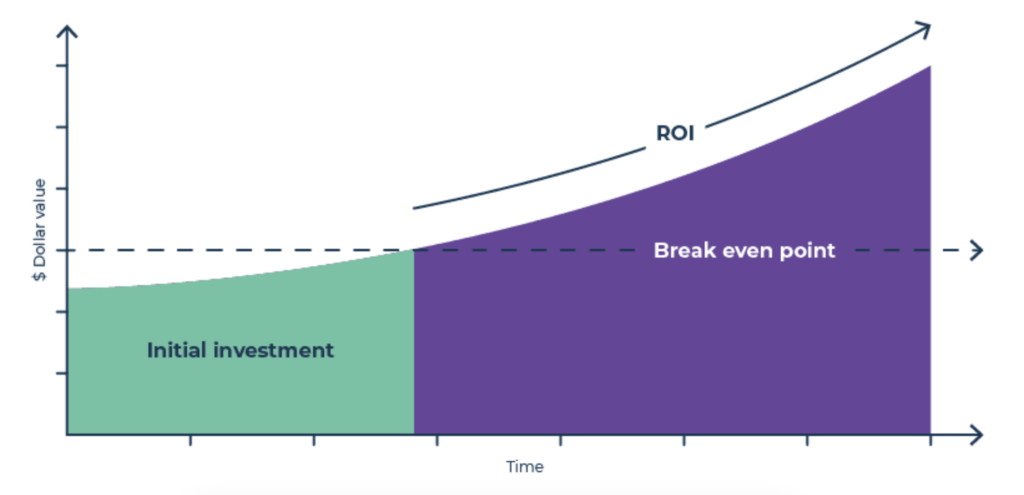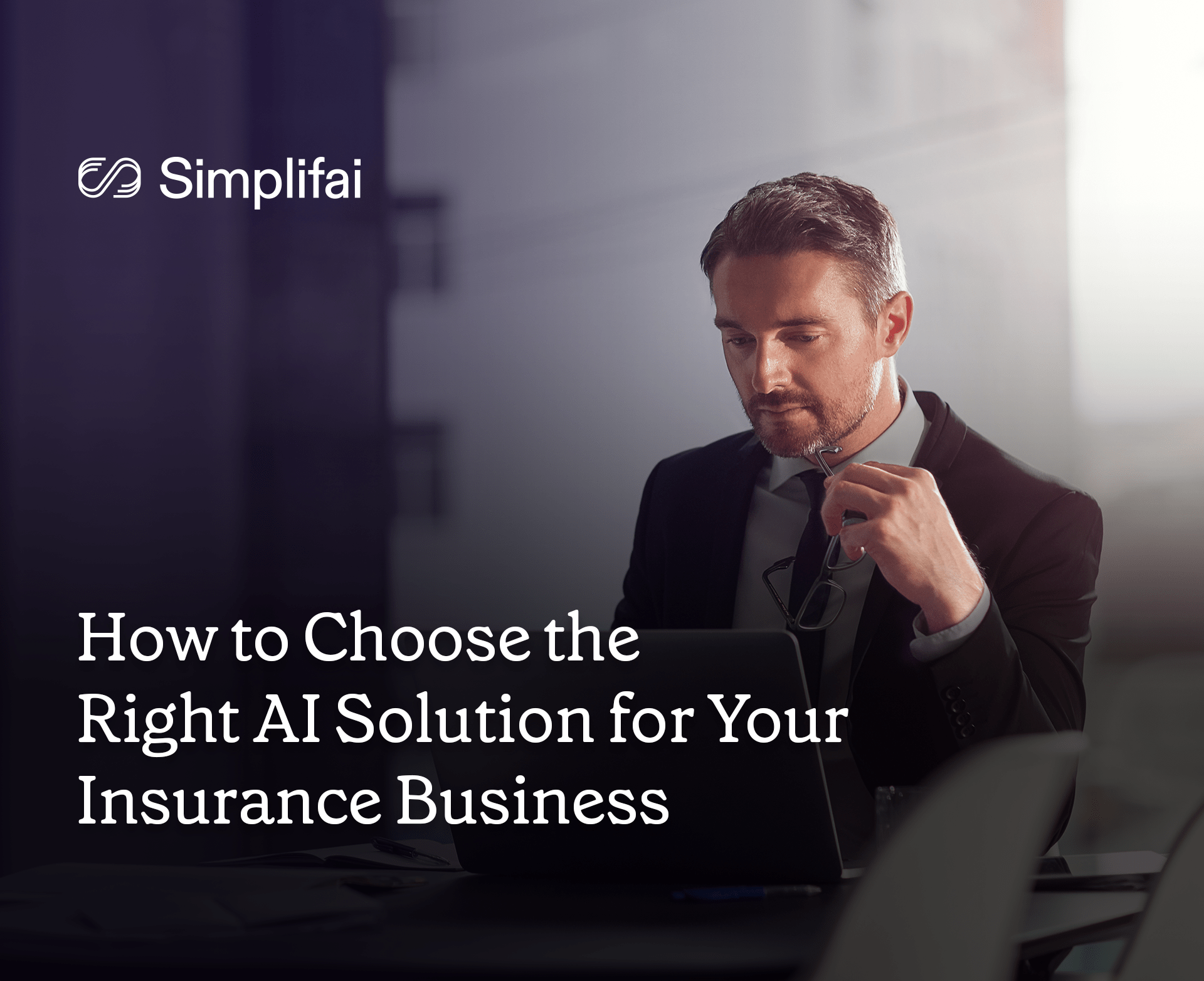How to turn Artificial Intelligence into a profitable investment
Artificial Intelligence is taking nearly every industry by storm and organizations are increasingly looking forward to experimenting with the numerous opportunities offered by this technology.

Introduction – Generating ROI for your business through Artificial Intelligence
Artificial Intelligence is taking nearly every industry by storm and organizations are increasingly looking forward to experimenting with the numerous opportunities offered by this technology. As per the 2021 Employee Technology Survey by Gartner, about 74% of employees who have experienced using automation technologies said these technologies helped them do their job better [1].

With improved penetration in different markets, businesses are increasingly trusting AI to bring value to their products and services. This trust factor has also increased as a result of changes in the perception of businesses toward AI. In this way, companies can take inspiration by looking at successful use cases that document how other companies implemented AI [3].
Return on Investment is perhaps one of the most crucial areas of focus for every business, especially as it decides the path forward for growth and prosperity. However, it has been seen that not all businesses are able to derive the full potential of AI implementations, especially from the perspective of Return on Investment (ROI).

Keeping this notion in mind, this blog provides information about some of the key areas that a business needs to follow and work out, to derive a good ROI on the adoption of AI in the workplace.
What is holding back your business?
Most businesses are holding back on AI because they are unsure of what they can derive as Return on Investment. As a business leader, you need to first identify the key challenges faced by your organization, which have a direct impact on the expected ROI.
One of the key challenges a business often faces while implementing AI is the lack of proper funding, both internally and externally.
This might be due to various reasons ranging from apprehension towards a non-conventional tech to exorbitant funding costs that are likely to be initially seen.
A second key challenge is that when businesses choose complex AI solutions, they might require the employees to learn specific skill sets, further increasing the time and effort required.
A third most important challenge is the lack of sufficient sample data needed for an AI solution to work when it comes to generating ROI from Artificial Intelligence. AI as a continuously evolving tech thrives on data. Without sufficient samples data fed, the AI won’t be trained properly and will give subpar results, further hampering the returns, be it cost-saving, time-saving, or generating overall work productivity.
Investment, Cost Determination, and Savings
When it comes to generating Return on Investment from Artificial Intelligence, most businesses keep unrealistic expectations about the amount of revenue that can be generated in a particular time period.
It is important to understand that Artificial Intelligence like any other technology, does not bring results overnight. This is especially the case when you opt for big complex AI implementation which takes up huge time, money, and effort. Another aspect to keep in mind is to evaluate both direct and indirect ROI from AI.
Some of the key direct Returns on Investment derived from AI for businesses are improvement in work quality, reduction in manual work hours, quicker time taken for individual tasks, improved capacity, and employee bandwidth. Whereas, indirect ROI derived from AI generally includes long-term results such as better business transparency, cost optimization of service/product, improved budgeting processes, and overall streamlined operational mechanisms.
It is all about determining the costs that go into the process of deploying AI solutions for business automation in your business vs. how much costs will your business save in the long run. A key strategy to do this is to get a headcount of how many manual hours you can save after deploying an AI solution in your workspace [2].
Also prior to this, you need to estimate your current expenditure and how much can your business invest in AI automation. Based on these parameters, not only will the type of solution differ, but also you will get a clear idea of how much ROI can be expected.
An important aspect to remember in this strategy is to calculate or forecast the break-even point wherein the ROI would match the initial investment made. In this way, your business will be able to allow cost savings to dictate initial AI investments. When it comes to making a decision about choosing the right type of AI technology out of the myriad types available, doing a SWOT analysis for starters is the best way.

Bonus Tip: Focus on soft-dollar benefits – the initially small yet important parameters such as productivity, work quality, customer satisfaction, etc. which all carry a great potential to increase exponentially in the future.
Inference
From an overall perspective, as a business leader, you need to stay committed to deploying AI in your organization. Artificial Intelligence indeed can make a positive difference to the operational processes in companies. For example, as per the Employee Technology survey, 65% of automation technology users said these technologies removed repetitive tasks that added less value [2]. This frees up employees for more complex and meaningful work.

If you plan your strategies well enough, it will certainly give you bountiful returns, provided the strategies are executed properly. Also, if you are still unsure about implementing AI to generate ROI, then you can get an AI Proof of Concept (POC) done.
Sources
[1] Gartner Employee Technology Survey 2021 (2021). https://www.gartner.com/document/4001905?ref=sendres_email&refval=77884805
[2] Minevich, M. 4 Ways That You Can Prove ROI From AI (2020). https://www.forbes.com/sites/markminevich/2020/03/03/4-ways-that-you-can-prove-roi-from-ai/?sh=f503409784a7
[3] Cohen, E., Jaffri, A., Quick Answer: What Is the True Return on AI Investment? (2022). Gartner. https://www.gartner.com/document/4011621?ref=solrAll&refval=324720469%20%20(You%20can%20use%20it%20for%20your%20reference
About Simplifai
Simplifai is an AI solutions company that provides end-to-end automation for businesses dealing with free text emails, documents, and chat communications.
Simplifai AI solutions provide high-grade automation that is capable of deriving a healthy Return on Investment (ROI). We also help businesses overcome ROI-based challenges faced when it comes to adopting Artificial Intelligence in their workspace.
Along with RPA, API, and advanced NLP technology. Simplifai’s Digital Employee solutions are tailored as per business requirements and comprise individual AI modules such as Emailbot, Documentbot, and Chatbot. These modules can be integrated with third-party systems and are programmed to carry out specific tasks at the front-end and back-end.
Want to know more about our Digital Employees? Click the button below for more information:


